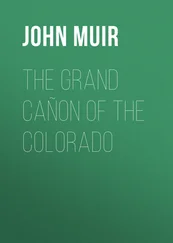John Muir - Travels in Alaska
Здесь есть возможность читать онлайн «John Muir - Travels in Alaska» — ознакомительный отрывок электронной книги совершенно бесплатно, а после прочтения отрывка купить полную версию. В некоторых случаях можно слушать аудио, скачать через торрент в формате fb2 и присутствует краткое содержание. Жанр: Путешествия и география, История, foreign_edu, foreign_antique, foreign_prose, на английском языке. Описание произведения, (предисловие) а так же отзывы посетителей доступны на портале библиотеки ЛибКат.
- Название:Travels in Alaska
- Автор:
- Жанр:
- Год:неизвестен
- ISBN:нет данных
- Рейтинг книги:4 / 5. Голосов: 1
-
Избранное:Добавить в избранное
- Отзывы:
-
Ваша оценка:
- 80
- 1
- 2
- 3
- 4
- 5
Travels in Alaska: краткое содержание, описание и аннотация
Предлагаем к чтению аннотацию, описание, краткое содержание или предисловие (зависит от того, что написал сам автор книги «Travels in Alaska»). Если вы не нашли необходимую информацию о книге — напишите в комментариях, мы постараемся отыскать её.
Travels in Alaska — читать онлайн ознакомительный отрывок
Ниже представлен текст книги, разбитый по страницам. Система сохранения места последней прочитанной страницы, позволяет с удобством читать онлайн бесплатно книгу «Travels in Alaska», без необходимости каждый раз заново искать на чём Вы остановились. Поставьте закладку, и сможете в любой момент перейти на страницу, на которой закончили чтение.
Интервал:
Закладка:
My first trip up the river was made in the spring with the missionary party soon after our arrival at Wrangell. We left Wrangell in the afternoon and anchored for the night above the river delta, and started up the river early next morning when the heights above the “Big Stickeen” Glacier and the smooth domes and copings and arches of solid snow along the tops of the cañon walls were glowing in the early beams. We arrived before noon at the old trading-post called “Buck's” in front of the Stickeen Glacier, and remained long enough to allow the few passengers who wished a nearer view to cross the river to the terminal moraine. The sunbeams streaming through the ice pinnacles along its terminal wall produced a wonderful glory of color, and the broad, sparkling crystal prairie and the distant snowy fountains were wonderfully attractive and made me pray for opportunity to explore them.
Of the many glaciers, a hundred or more, that adorn the walls of the great Stickeen River Cañon, this is the largest. It draws its sources from snowy mountains within fifteen or twenty miles of the coast, pours through a comparatively narrow cañon about two miles in width in a magnificent cascade, and expands in a broad fan five or six miles in width, separated from the Stickeen River by its broad terminal moraine, fringed with spruces and willows. Around the beautifully drawn curve of the moraine the Stickeen River flows, having evidently been shoved by the glacier out of its direct course. On the opposite side of the cañon another somewhat smaller glacier, which now terminates four or five miles from the river, was once united front to front with the greater glacier, though at first both were tributaries of the main Stickeen Glacier which once filled the whole grand cañon. After the main trunk cañon was melted out, its side branches, drawing their sources from a height of three or four to five or six thousand feet, were cut off, and of course became separate glaciers, occupying cirques and branch cañons along the tops and sides of the walls. The Indians have a tradition that the river used to run through a tunnel under the united fronts of the two large tributary glaciers mentioned above, which entered the main cañon from either side; and that on one occasion an Indian, anxious to get rid of his wife, had her sent adrift in a canoe down through the ice tunnel, expecting that she would trouble him no more. But to his surprise she floated through under the ice in safety. All the evidence connected with the present appearance of these two glaciers indicates that they were united and formed a dam across the river after the smaller tributaries had been melted off and had receded to a greater or lesser height above the valley floor.
The big Stickeen Glacier is hardly out of sight ere you come upon another that pours a majestic crystal flood through the evergreens, while almost every hollow and tributary cañon contains a smaller one, the size, of course, varying with the extent of the area drained. Some are like mere snow-banks; others, with the blue ice apparent, depend in massive bulging curves and swells, and graduate into the river-like forms that maze through the lower forested regions and are so striking and beautiful that they are admired even by the passing miners with gold-dust in their eyes.
Thirty-five miles above the Big Stickeen Glacier is the “Dirt Glacier,” the second in size. Its outlet is a fine stream, abounding in trout. On the opposite side of the river there is a group of five glaciers, one of them descending to within a hundred feet of the river.
Near Glenora, on the northeastern flank of the main Coast Range, just below a narrow gorge called “The Cañon,” terraces first make their appearance, where great quantities of moraine material have been swept through the flood-choked gorge and of course outspread and deposited on the first open levels below. Here, too, occurs a marked change in climate and consequently in forests and general appearance of the face of the country. On account of destructive fires the woods are younger and are composed of smaller trees about a foot to eighteen inches in diameter and seventy-five feet high, mostly two-leaved pines which hold their seeds for several years after they are ripe. The woods here are without a trace of those deep accumulations of mosses, leaves, and decaying trunks which make so damp and unclearable mass in the coast forests. Whole mountain-sides are covered with gray moss and lichens where the forest has been utterly destroyed. The river-bank cottonwoods are also smaller, and the birch and contorta pines mingle freely with the coast hemlock and spruce. The birch is common on the lower slopes and is very effective, its round, leafy, pale-green head contrasting with the dark, narrow spires of the conifers and giving a striking character to the forest. The “tamarac pine” or black pine, as the variety of P. contorta is called here, is yellowish-green, in marked contrast with the dark lichen-draped spruce which grows above the pine at a height of about two thousand feet, in groves and belts where it has escaped fire and snow avalanches. There is another handsome spruce hereabouts, Picea alba , very slender and graceful in habit, drooping at the top like a mountain hemlock. I saw fine specimens a hundred and twenty-five feet high on deep bottom land a few miles below Glenora. The tops of some of them were almost covered with dense clusters of yellow and brown cones.
We reached the old Hudson's Bay trading-post at Glenora about one o'clock, and the captain informed me that he would stop here until the next morning, when he would make an early start for Wrangell.
At a distance of about seven or eight miles to the northeastward of the landing, there is an outstanding group of mountains crowning a spur from the main chain of the Coast Range, whose highest point rises about eight thousand feet above the level of the sea; and as Glenora is only a thousand feet above the sea, the height to be overcome in climbing this peak is about seven thousand feet. Though the time was short I determined to climb it, because of the advantageous position it occupied for general views of the peaks and glaciers of the east side of the great range.
Although it was now twenty minutes past three and the days were getting short, I thought that by rapid climbing I could reach the summit before sunset, in time to get a general view and a few pencil sketches, and make my way back to the steamer in the night. Mr. Young, one of the missionaries, asked permission to accompany me, saying that he was a good walker and climber and would not delay me or cause any trouble. I strongly advised him not to go, explaining that it involved a walk, coming and going, of fourteen or sixteen miles, and a climb through brush and boulders of seven thousand feet, a fair day's work for a seasoned mountaineer to be done in less than half a day and part of a night. But he insisted that he was a strong walker, could do a mountaineer's day's work in half a day, and would not hinder me in any way.
“Well, I have warned you,” I said, “and will not assume responsibility for any trouble that may arise.”
He proved to be a stout walker, and we made rapid progress across a brushy timbered flat and up the mountain slopes, open in some places, and in others thatched with dwarf firs, resting a minute here and there to refresh ourselves with huckleberries, which grew in abundance in open spots. About half an hour before sunset, when we were near a cluster of crumbling pinnacles that formed the summit, I had ceased to feel anxiety about the mountaineering strength and skill of my companion, and pushed rapidly on. In passing around the shoulder of the highest pinnacle, where the rock was rapidly disintegrating and the danger of slipping was great, I shouted in a warning voice, “Be very careful here, this is dangerous.”
Читать дальшеИнтервал:
Закладка:
Похожие книги на «Travels in Alaska»
Представляем Вашему вниманию похожие книги на «Travels in Alaska» списком для выбора. Мы отобрали схожую по названию и смыслу литературу в надежде предоставить читателям больше вариантов отыскать новые, интересные, ещё непрочитанные произведения.
Обсуждение, отзывы о книге «Travels in Alaska» и просто собственные мнения читателей. Оставьте ваши комментарии, напишите, что Вы думаете о произведении, его смысле или главных героях. Укажите что конкретно понравилось, а что нет, и почему Вы так считаете.












